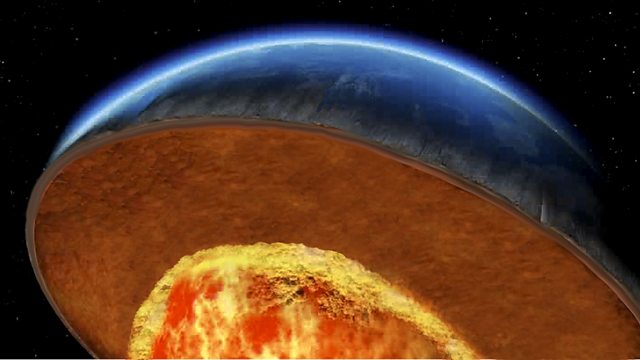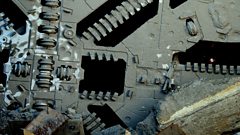Core: A Journey to the Centre of the Earth
What lies at the heart of the universe and the core of the earth itself? With Arif Babul, Anna Frebel and Paul Savage.
How startling discoveries about the core of the earth and the oldest star yet known help us understand our place in the grand scheme of things. Tim Marlow and the astrophysicist Arif Babul, the astronomer Anna Frebel and the earth scientist Paul Savage go on a quest to find the core or centre.
(Photo: a split Earth showing a molten core)
Last on
More episodes
Previous
Next
Clip
-
![]()
Is it possible to reach the earth’s core?
Duration: 00:53
Arif Babul
Anna Frebel
Professor Anna Frebel is Assistant Professor in the Astrophysics Division of the Department of Physics at the Massachusetts Institute of Technology (MIT) in the USA. Anna is credited with discovering several of the oldest and most primitive stars using the world’s largest telescopes. As one of the world’s leading researchers in this field, Anna Frebel has “excavated” sections of the night sky in the hunt for these extremely rare relic stars—some of which have been shining for more than 13 billion years. Her book ‘Searching for the Oldest Stars: Ancient Relics from the Early Universe’ examines these phenomena.
Paul Savage
Dr Paul Savage is the Marie Curie Research Fellow in the Department of Earth Sciences at Durham University in the UK as well as an Honorary Research Fellow at the University of St. Andrews. Dr Savage’s research has shown for the first time there are vast amounts of sulphur in the earth’s core. Dr Savage explains how solid geochemical evidence supports this, lending weight to the theory that the Moon was formed by a planet-sized body colliding with Earth. He says the key to confirming this lay in measuring the isotope ratios of elements (isotopes are atoms of the same element with slightly different masses) in the mantle, and comparing these to certain meteorites, which are believed to be the best match to Earth's original composition.
60 second Idea to Change the World: Turn all the lights off

In our Sixty Second Idea
to improve the world, the astronomer Anna Frebel suggests that once a year the
entire earth should switch off all the lights, so that we can truly marvel at
the universe.
Photo/illustration: Shan Pillay
Broadcasts
- Mon 9 Nov 2015 02:06GMT���˿��� World Service except Americas and the Caribbean & Australasia
- Mon 9 Nov 2015 05:06GMT���˿��� World Service Americas and the Caribbean
- Tue 10 Nov 2015 09:06GMT���˿��� World Service
- Tue 10 Nov 2015 13:06GMT���˿��� World Service Australasia
- Tue 10 Nov 2015 23:06GMT���˿��� World Service
- Wed 11 Nov 2015 02:06GMT���˿��� World Service Australasia
Featured in...
![]()
The World Service 2015 Playlist
A selection of unforgettable listens from the year
Podcast
-
![]()
The Forum
The programme that explains the present by exploring the past




